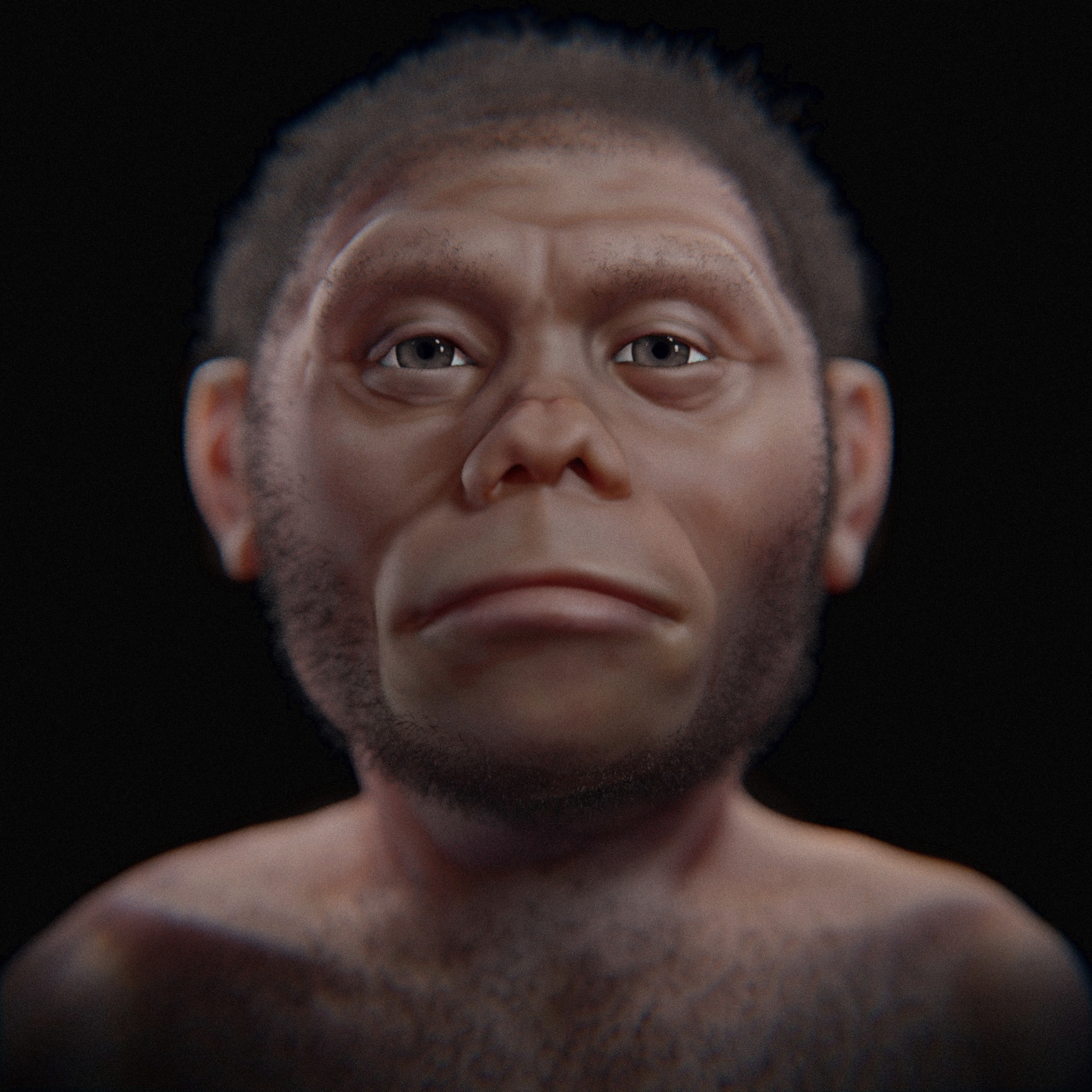The face of one of the strongest characters in the human family tree, Homo floresiensis, has been reconstructed by a small team of archaeologists and 3D designers.
Nicknamed “the hobbit” because of its short stature, H. floresiensis is an extinct species of archaic human that stood around 1.1 meters (3 feet 7 inches) in height. Remarkably, this species walked the Earth at the same time as our species, Homo sapiens, and is thought to have only gone extinct around 50,000 years ago shortly after we arrived in the area.
Remains of this little fella were first discovered in 2003 on the Indonesian island of Flores. Since then, over a dozen other specimens have been uncovered on the island, but many unknowns still surround the enigmatic species.
In a new study, the face of H. floresiensis was pieced together by closely studying the species’ skull, using its shape and structure to make estimates about how soft tissue would have laid against the bone. The work relied on scans of LB1, a near-complete skeleton of the species found in the Liang Bua cave of Flores.

A face-on view of the Homo floresiensis reconstruction.
The act of facial reconstruction using just a skull is not an exact science, so some artistic license is needed. This is because the shape of the skull can only provide limited insights into how soft tissue, such as muscle, and fat, would actually appear on a person’s face.
Furthermore, no one is certain what color hair H. floresiensis had, nor the extent of its hairiness, so some features have to be approximated with educated guesses.
The place of H. floresiensis in the human family tree is uncertain, but their skulls bear some resemblance to another well-known member, Homo erectus.
The team who discovered H. floresiensis originally proposed that a population of H. erectus traveled to Flores from Java. Over hundreds of thousands of years, the population shrunk in size as a result of insular dwarfism, a process in which animals evolve to become smaller when their population’s range is limited to a small environment.
That’s just one theory, however. Another idea – which has been widely disputed – is that the remains of H. floresiensis are simply Homo sapiens with a congenital health disorder such as microcephaly, which results in a smaller skull.
There have even been doubts about whether the species can really be considered a member of the Homo genus as it bears many “archaic” characteristics that are more akin to earlier human ancestors, such as Australopithecus.
To make matters even hazier, scientists have not obtained DNA from a skeleton of H. floresiensis so far. Attempts were made in 2006, but their efforts fell flat.
For now, this species remains as mysterious as ever. However, thanks to this recent 3D reconstruction, at least we can now put a face to a name.
The study, which has not been peer reviewed, is published in the e-book OrtogOnline vol. 4.
Source Link: Face Of The "Hobbit" Human That Lived 50,000 Years Ago Has Been Reconstructed